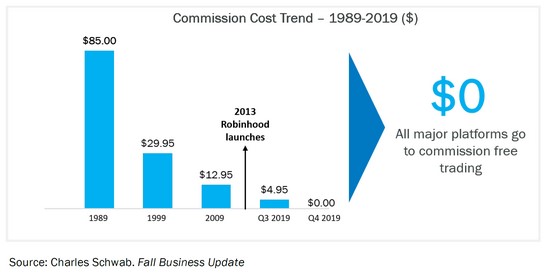If you’ve been reading the financial media over the past year, you may have noticed a lot of chatter about something called “Custom Indexing” (aka Personal or Direct Indexing). In this post, I’ll explain what custom indexing is, and share my thoughts about it.
What is custom indexing?
Index investing was popularized by the late Jack Bogle at Vanguard over the past 40+ years. In a nutshell, Bogle counseled investors to stop trying to actively pick winning investments. Better instead to passively purchase ALL available investments. The idea was to let the market do the work of finding great investments. So Bogle created an investment fund that adhered to an “index” or broad list of investments. The most well known index is the S&P 500, which includes about 500 of the largest companies in the U.S.
Today, there are thousands of different index funds available. You can choose funds which offer exposure to international companies, value or growth companies, small or large companies, all sorts of bonds, preferred stocks, etc. An investor can get a smart, well diversified portfolio by combining a few index funds. However, that same investor still lacks control over the components of the index. And that is where custom indexing comes in.
With custom indexing, you design a personal index fund. You pick every investment within your portfolio and no longer need to rely on Vanguard or Blackrock to provide an index fund.
Not a new idea
It’s important to note that custom indexing is not a new idea. Historically, financial advisors could help clients create a custom index with something called a Separately Managed Account (SMA) or clients could simply do it themselves. But there were a couple problems. The first was high trading costs, which limited access to the very wealthy. The second problem was the extensive time/effort involved in keeping track of all of the individual positions within a custom index, which further increased the cost of the strategy.
So what changed? Trading costs and technology.
Take a look at the chart below.

In 1989, the average stock trade cost $89. Over time, competition heated up, and voilà… trading costs are now pretty close to zero1. Imagine trying to build a custom index fund in 1989. Assume your chosen index had about 500 individual positions (like the S&P 500). Initial set up trades alone would cost $44,500 ($89 x 500). Not exactly cheap. Smaller portfolios would have paid the same fees. Only investors with large portfolios ($5,000,000 and up) could even have considered implementing this strategy. For something with a broader list of assets, say 3000, well… that would not work so well.
However, today’s close-to-zero trading costs expand access to custom indexing. Only have $50,000 to invest? No problem! Want a portfolio with 100 stocks? Sure! How about 1,000 stocks? Done! But now we have another issue. How do you keep track of all of those positions? Time for some technology!
Computing power, cloud-based computing, web-based software. All of these technologies have improved over the past 10-15 years, and now they have enabled companies to provide software which is up to the task of handling a custom index. Custom indexing companies can measure risk and performance and splice and dice the data in any number of ways. They can also set up programmatic rules to manage the portfolio and keep everything working correctly.
Benefits of custom indexing
What are the benefits of custom indexing? Read through the pitchbooks provided by custom indexing companies, and you’ll notice a common set of selling points.
Personal ESG
For investors with deeply held environmental, social, or governance (ESG) beliefs, custom indexing offers unique options. For example, if you don’t like guns (or alcohol, cigarettes, etc.), then investing in a plain-vanilla index fund might give you pause as they will often incorporate companies regardless of their business model. The investment industry has tried to accommodate these concerns by developing ESG-focused index funds that screen out companies according to a set of predefined criteria. But custom indexing can offer a more targeted approach.
Industry of employment risk
Another benefit of custom indexing is the ability to limit exposure to your industry of employment. For example, if a software engineer at Google is considering investment fund options, she may want to limit her overall risk exposure to the technology industry (or even to Google itself since it can be such a large portion of many indexes). Can she do this with a standard index fund? She could use sector-specific index funds to construct a reasonable portfolio, but it’s not a very precise solution. Again, custom indexing offers a more nuanced and targeted approach to this problem.
Tax loss harvesting
Every custom indexing company loves to pitch the tax benefits of custom indexing. With a typical index fund, if you want to harvest tax losses, you need to sell the entire fund including any winners contained within it. But with custom indexing, you can sell the individual companies that have losses and keep the positions with gains. Some custom indexing firms even offer daily tax loss harvesting. So every day they’ll look at your holdings and sell any positions with an available tax loss, then purchase a similar (but not identical) investment at the same time or wait to repurchase the identical position in 31 days (to avoid wash sales).
What I don’t like
I can’t remember who said it, but I heard an interesting quote a few years back pertaining to car culture in the U.S.:
What we need is transportation, what we get is self-esteem.
-unknown
The speaker was trying to make a point about the difference between needs and wants. A car is merely a means of getting from one place to another (the need). But we often co-mingle our own self-regard or reputation with the cool features and luxuries of the car we drive (the want). After all, we love our SUVs, trucks, and high-end cars! And no one wants to be seen driving the kids to soccer practice in a 2002 Honda Civic!

This dynamic can apply to custom indexing as well. Low-cost index funds offer tremendous benefits (i.e. “transportation”). They can get your investment portfolio from one place to another. But they aren’t exactly exhilarating and rarely give you a boost of self-esteem. Index funds are boring and bland. However, with custom indexing, you can give your portfolio a flashy red paint color or nice leather seats. With custom indexing, you might even be tempted to tell your friends about your portfolio and how great it is. But at the end of the day, custom indexing is not likely to improve your investment returns.
Higher cost, more complex
Another concern I have with custom indexing is the higher cost. For investors with less than $2,000,000, the annual fee for custom indexing is in the neighborhood of 0.40%. This is a step in the wrong direction. If costs for custom indexing come down over time (which I hope they will), then that’s great. But I’m skeptical that the costs will ever rival those of the typical index fund portfolio.
Custom indexing also adds a layer of complexity. Rick Ferri, a noted investing expert, said bluntly about custom indexing, “Complexity equals job security.” And if there’s one thing people in the financial world love, it’s complexity. In certain fields like medicine or engineering, complexity is unavoidable… building a bridge or doing brain surgery can only be simplified so much. But in finance, much of the complexity is self-imposed.
Just ask the inventors of mortgage backed securities (MBS), collateralized debt obligations (CDO), or credit default swaps (CDS). The financial system had gotten along fine before these financially engineered products ever existed. But they just about blew everything up back in 2008-09. I would argue that the extra complexity generated by MBS/CDO/CDS has had zero or even negative value to society. The main beneficiaries from these products have been the financial firms creating, packaging, and selling them. I don’t think custom indexing is anywhere near as awful as MBS/CDO/CDS, but I’ll always caution against using any financial product that adds unnecessary complexity.
Wishful thinking on taxes
I also believe the tax benefits from custom indexing are over-hyped. For example, if your custom index assets are in a qualified account like an IRA, then those tax loss harvesting benefits go “Poof!” and disappear.
What about tax loss harvesting in a taxable brokerage account? It’s a toss up whether you’ll be better or worse off. Wash sale rules still apply. If you sell a position, and that same position has a good run during the 30-day wash sale window, well, you lose out on those returns2. In essence, without a more in depth analysis, daily tax loss harvesting turns into a bet on short-term performance. That veers very close to market timing and short-term trading.
Another thing to consider is the embedded capital gains in your current investment portfolio. If you have been investing for a few years, then it’s likely you have considerable unrealized gains. And the tax cost of transitioning your existing positions to a custom index will be high. You’ll need to sell your current investments and pay tax on any associated capital gains in order to reinvest into the custom index.
What I like
One thing I do like about custom indexing is the ability to steer around risks associated with your industry of employment. But here again I believe the benefit is over-sold. If you work for Google, then sure, go ahead and trim Alphabet’s stock out of your portfolio. But for the vast majority of folks who work for private companies or smaller public companies that don’t represent a large portion of a standard index fund portfolio, this benefit is nonmaterial. And trimming out an entire sector (i.e. technology) doesn’t seem wise to me. There may be some middle ground in there somewhere, but most people won’t benefit all that much in this regard.
ESG benefits make sense
I’m also not willing to second guess someone who uses custom indexing to adhere to their ESG investing beliefs. If you don’t want your dollars to support gun companies (or alcohol, tobacco, etc.), that’s a reasonable choice and custom indexing can help you achieve that. It’s your money after all, so it should follow your values and intentions. However, like many choices, there is a tradeoff to pursuing this strategy. Namely, you might have to sacrifice some performance3. However, it’s impossible to overstate to benefits of living an authentic life that matches your values, and that includes where your investment dollars go.
Notes:
- I say “pretty close” because bid/ask spreads are still very real and “payment for order flow” also represents an indirect trading cost.
- It’s notable to mention that plain old index funds offer a way to harvest tax losses AND avoid the wash sale rule by pairing similar funds and switching between them. For example, you could pair the Vanguard S&P 500 Index ETF (VOO) with the iShares Core S&P 500 ETF (IVV). If you bought VOO and it went down, you could then sell VOO to realize the tax loss and simultaneously purchase IVV to replace it. The underlying investments in your portfolio are practically unchanged.
- Case in point would be Altria, the best performing stock in history.

